page 55
Note: the contents of this page as well as those which precede and follow, must be read as a continuation and/or overlap in order that the continuity about a relationship to/with the dichotomous arrangement of the idea that one could possibly talk seriously about peace from a different perspective as well as the typical dichotomous assignment of Artificial Intelligence (such as the usage of zeros and ones used in computer programming) ... will not be lost (such as war being frequently used to describe an absence of peace and vice-versa). However, if your mind is prone to being distracted by timed or untimed commercialization (such as that seen in various types of American-based television, radio, news media and magazine publishing... not to mention the average classroom which carries over into the everyday workplace), you may be unable to sustain prolonged exposures to divergent ideas about a singular topic without becoming confused, unless the information is provided in a very simplistic manner. In other words, by trying to deine what we meany by music, we are brought to the forefront of how to define peace. Without such a definition, how are we to rationally discuss peace if there is no common definition?
Let's face it, humanity has a lousy definition, accompanying practice, and analysis of peace.
Curiously, we did not begin a reference to music by first offering a definition thereof. Like so many people, we jumped into a discussion applied to a certain context (in this case about peace) by stating comments that assumed the reader would know what we are discussing. While it would seem that most people would know what is meant by the topic "music", let us for the moment retrace our steps and offer a representative illustration about what is meant by the term "music" that differs from one's implied presumptions.
Introduction (Music)
(The term "music" refers to a form of) art concerned with combining vocal or instrumental sounds for beauty of form or emotional expression, usually according to cultural standards of rhythm, melody, and, in most Western music, harmony.
Both the simple folk song and the complex electronic composition belong to the same activity, music. Both are humanly engineered; both are conceptual and auditory, and these factors have been present in music of all styles and in all periods of history, throughout the world.
Music is an art that, in one guise or another, permeates every human society. Modern music is heard in a bewildering profusion of styles, many of them contemporary, others engendered in past eras. Music is a protean art; it lends itself easily to alliances with words, as in song, and with physical movement, as in dance. Throughout history, music has been an important adjunct to ritual and drama and has been credited with the capacity to reflect and influence human emotion. Popular culture has consistently exploited these possibilities, most conspicuously today by means of radio, film, television, and the musical theatre. The implications of the uses of music in psychotherapy, geriatrics, and advertising testify to a faith in its power to affect human behaviour. Publications and recordings have effectively internationalized music in its most significant, as well as its most trivial, manifestations. Beyond all this, the teaching of music in primary and secondary schools has now attained virtually worldwide acceptance.
But the prevalence of music is nothing new, and its human importance has often been acknowledged. What seems curious is that, despite the universality of the art, no one until recent times has argued for its necessity. The ancient Greek philosopher Democritus explicitly denied any fundamental need for music: "For it was not necessity that separated it off, but it arose from the existing superfluity." The view that music and the other arts are mere graces is still widespread, although the growth of psychological understanding of play and other symbolic activities has begun to weaken this tenacious belief.
Historical conceptions
Music is everywhere to be heard. But what is music? Commentators have spoken of "the relationship of music to the human senses and intellect," thus affirming a world of human discourse as the necessary setting for the art. A definition of music itself will take longer. As Aristotle said, "It is not easy to determine the nature of music or why anyone should have a knowledge of it."
Early in the 20th century, it was regarded as a commonplace that a musical tone was characterized by the regularity of its vibrations; this uniformity gave it a fixed pitch and distinguished its sounds from "noise." Although the view may be supported by traditional music, it was an unacceptable yardstick in the latter half of the 20th century, when "noise" itself or silence was sometimes treated as an element in composition, to say nothing of the random sounds incorporated (without prior knowledge of what they will be) by modern composers, such as the American John Cage, and others in works having aleatory (chance) or impromptu features. Tone, moreover, is only one component in music, others being rhythm, timbre (tone colour), and texture. Electronic machinery enabled some composers to create works in which the traditional role of the interpreter is abolished and to record, directly on tape, sounds that were formerly beyond human ability to produce, if not to imagine.
The non-Western world
From historical accounts, it is clear that the power to move people has always been attributed to music; its ecstatic possibilities have been recognized in all cultures and have usually been admitted in practice under particular conditions, sometimes stringent ones. In the civilization of India, music was put into the service of religion from earliest times; Vedic hymns stand at the beginning of the record. As the art developed over many centuries into a music of profound melodic and rhythmic intricacy, the discipline of a religious text or the guideline of a story determined the structure. Even today the narrator is central in most performances of Indian music, and the virtuosity of a skillful singer rivals that of the instrumentalists. There is very little concept of vocal or instrumental idiom in the Western sense. The vertical dimension of chord structure—that is, the effects created by sounding tones simultaneously—is not a part of South Asian music; the divisions of an octave (intervals) are more numerous than in Western music, and melodic complexity in Asian music goes far beyond that of Western practice. Moreover, an element of improvisation is retained that is vital to the success of a performance. The spontaneous imitation carried on between an instrumentalist and narrator, against the insistent rhythmic subtleties of the drums, can be a source of the greatest excitement, which in large measure is because of the faithful adherence to the rigid rules that govern the rendition of ragas—the ancient melodic patterns of Indian music.
Chinese music, like the music of India, has traditionally been an adjunct to ceremony or narrative. Confucius (551-479 BCE) assigned an important place to music in the service of a well-ordered moral universe. He saw music and government as reflecting one another and believed that only the superior man who can understand music is equipped to govern. Music, he thought, reveals character through the six emotions that it can portray: sorrow, satisfaction, joy, anger, piety, love. According to Confucius, great music is in harmony with the universe, restoring order to the physical world through that harmony. Music, as a true mirror of character, makes pretense or deception impossible.
Ancient Greek ideas
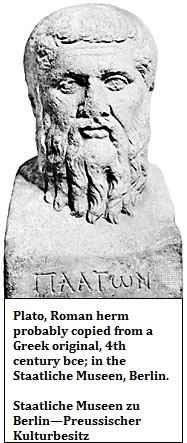
Although music was important in the life of ancient Greece, it is not now known how that music actually sounded. Only a few notated fragments have survived, and no key exists for restoring even these. The Greeks were given to theoretical speculation about music; they had a system of notation, and they "practiced music," as Socrates himself, in a vision, had been enjoined to do. But the Greek term from which the word music is derived was a generic one, referring to any art or science practiced under the aegis of the Muses. Music, therefore, as distinct from gymnastics, was all encompassing. (Much speculation, however, was clearly directed toward that more restricted meaning with which we are familiar.) Music was virtually a department of mathematics for the philosopher Pythagoras (c. 550 BCE), who was the first musical numerologist and who laid the foundations for acoustics. In acoustics, the Greeks discovered the correspondence between the pitch of a note and the length of a string. But they did not progress to a calculation of pitch on the basis of vibrations, though an attempt was made to connect sounds with underlying motions.
Plato (428-348/347 BCE), like Confucius, looked on music as a department of ethics. And like Confucius he was anxious to regulate the use of particular modes (i.e., arrangements of notes, like scales) because of their supposed effects on men. Plato was a stern musical disciplinarian; he saw a correspondence between the character of a man and the music that represented him. Straightforward simplicity was best. In the Laws, Plato declared that rhythmic and melodic complexities were to be avoided because they led to depression and disorder. Music echoes divine harmony; rhythm and melody imitate the movements of heavenly bodies, thus delineating the music of the spheres and reflecting the moral order of the universe. Earthly music, however, is suspect; Plato distrusted its emotional power. Music must therefore be of the right sort; the sensuous qualities of certain modes are dangerous, and a strong censorship must be imposed. Music and gymnastics in the correct balance would constitute the desirable curriculum in education. Plato admitted and valued music in its ethically approved forms; his concern was primarily with the effects of music, and he therefore regarded it as a psycho-sociological phenomenon.
Yet Plato, in treating earthly music as a shadow of the Ideal, saw a symbolic significance in the art. Aristotle carried forward the concept of the art as imitation, but music could express the universal as well. His idea that works of art could contain a measure of truth in themselves—an idea voiced more explicitly by Plotinus in the 3rd century CE—gave added strength to the symbolic view. Aristotle, following Plato, thought that music has power to mold human character, but he would admit all the modes, recognizing happiness and pleasure as values to both the individual and the state. He advocated a rich musical diet. Aristotle made a distinction between those who have only theoretical knowledge and those who produce music, maintaining that persons who do not perform cannot be good judges of the performances of others.
Aristoxenus, a pupil of Aristotle, gave considerable credit to the human listener, his importance and his powers of perception. He denigrated the dominance of mathematical and acoustical considerations. For Aristoxenus, music was emotional and fulfilled a functional role, for which both the hearing and the intellect of the listener were essential. Individual tones were to be understood in their relations to one another and in the context of larger formal units. The Epicureans and Stoics adopted a more naturalistic view of music and its function, which they accepted as an adjunct to the good life. They gave more emphasis to sensation than did Plato, but they nevertheless placed music in the service of moderation and virtue. A dissenting 3rd-century voice was that of Empiricus, who said that music was an art of tones and rhythms only that meant nothing outside itself.
The Platonic influence in musical thought was to be dominant for at least a millennium. Following that period of unquestioned philosophic allegiance, there were times of rededication to Greek concepts, accompanied by reverent and insistent homage (e.g., the group of late 16th-century Florentines, known as the Camerata, who were instrumental in the development of opera). Such returns to simplicity, directness, and the primacy of the word have been made periodically, out of loyalty to Platonic imperatives, however much these "neo" practices may have differed from those of the Greeks themselves.
In the 21st century, the effects of Greek thought are still strongly evident in the belief that music influences the ethical life; in the idea that music can be explained in terms of some component such as number (that may itself be only a reflection of another, higher source); in the view that music has specific effects and functions that can be appropriately labeled; and in the recurrent observation that music is connected with human emotion. In every historical period there have been defectors from one or more of these views, and there are, of course, differences of emphasis.
Music in Christianity
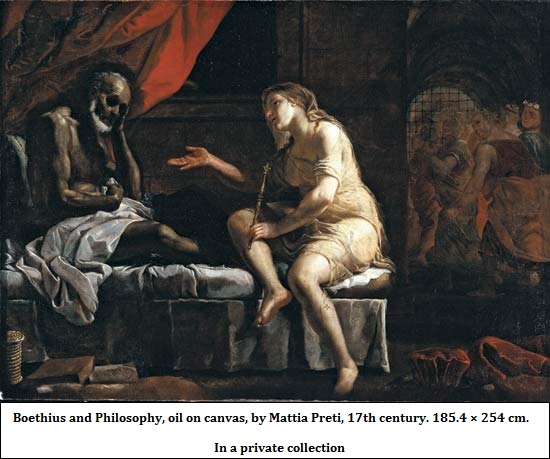
Much of the Platonic-Aristotelian teaching, as restated by the Roman philosopher Boethius (c. 480-524), was well suited to the needs of the church; the conservative aspects of that philosophy, with its fear of innovation, were conducive to the maintenance of order. The role of music as accessory to words is nowhere more clearly illustrated than in the history of Christianity, where the primacy of the text has always been emphasized and sometimes, as in Roman Catholic doctrine, made an article of faith. In the varieties of plainchant, melody was used for textual illumination; the configurations of sound took their cue from the words. St. Augustine (354-430 CE), who was attracted by music and valued its utility to religion, was fearful of its sensuous element and anxious that the melody never take precedence over the words. These had been Plato's concerns also. Still echoing the Greeks, Augustine, whose beliefs were reiterated by St. Thomas Aquinas (c. 1225-74), held the basis of music to be mathematical; music reflects celestial movement and order.
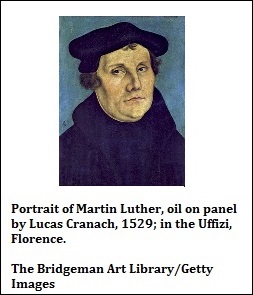
Martin Luther (1483-1546) was a musical liberal and reformer. But the uses he envisioned for music, despite his innovations, were in the mainstream of tradition; Luther insisted that music must be simple, direct, accessible, an aid to piety. His assignment of particular qualities to a given mode is reminiscent of Plato and Confucius. John Calvin (1509-64) took a more cautious and fearful view of music than did Luther, warning against voluptuous, effeminate, or disorderly music and insisting upon the supremacy of the text.
17th- and 18th-century Western conceptions
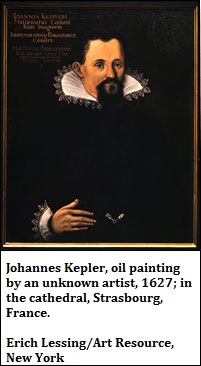
In reviewing the accounts of music that have characterized musical and intellectual history, it is clear that the Pythagoreans are reborn from age to age. The German astronomer Johannes Kepler (1571-1630) perpetuated, in effect, the idea of the harmony of the spheres, attempting to relate music to planetary movement. René Descartes (1596-1650), too, saw the basis of music as mathematical. He was a faithful Platonist in his prescription of temperate rhythms and simple melodies so that music would not produce imaginative, exciting, and hence immoral, effects. For another philosopher-mathematician, the German Gottfried von Leibniz (1646-1716), music reflected a universal rhythm and mirrored a reality that was fundamentally mathematical, to be experienced in the mind as a subconscious apprehension of numerical relationships.
Immanuel Kant (1724-1804) ranked music as lowest in his hierarchy of the arts. What he distrusted most about music was its wordlessness; he considered it useful for enjoyment but negligible in the service of culture. Allied with poetry, however, it may acquire conceptual value. Georg Wilhelm Friedrich Hegel (1770-1831) also extolled the discursive faculties, saying that art, though it expresses the divine, must yield to philosophy. He acknowledged the peculiar power of music to express many nuances of the emotions. Like Kant, Hegel preferred vocal music to instrumental, deprecating wordless music as subjective and indefinite. The essence of music he held to be rhythm, which finds its counterpart in the innermost self. What is original in Hegel's view is his claim that music, unlike the other arts, has no independent existence in space, is not "objective" in that sense; the fundamental rhythm of music (again an aspect of number) is experienced within the hearer.
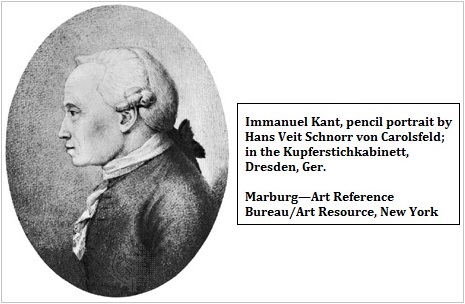
After the 18th century, speculations upon the intrinsic nature of music became more numerous and profound. The elements necessary for a more comprehensive theory of its function and meaning became discernible. But philosophers whose views have been summarized thus far were not speaking as philosophers of music. Music interested them in terms extrinsic to itself, in its observable effects; in its connections with dance, religious ritual, or festive rites; because of its alliance with words; or for some other extra-musical consideration. The only common denominator to be found, aside from the recognition of different types of music, is the acknowledgment of its connection with the emotional life; and here, to be sure, is that problematic power of the art to move. Various extra-musical preoccupations are today the raison d'être of "contextualist" explanations of music, which are concerned with its relation to the human environment. The history of music itself is largely an account of its adjunctive function in rituals and ceremonies of all kinds—religious, military, courtly—and in musical theatre. The protean character of music that enables it to form such easy alliances with literature and drama (as in folk song, art song, opera, "background" music) and with the dance (ritual, popular entertainment, "social," ballet) appears to confirm the wide range and influence that the Greeks assigned to it.
The concept of dynamism
Modern theories of musical meaning
Before the 19th century, musicians themselves seldom were theorists, if theorist is defined as one who explicates meaning. Musical theory, when it was something other than the exposition of a prevalent or emerging style, was likely to be a technical manual guiding vocal or instrumental performance, a set of directions for meeting current exigencies in church or theatre practice, or a missive advocating reforms. Prolific masters, such as Johann Sebastian Bach, produced not learned treatises but monuments of art.
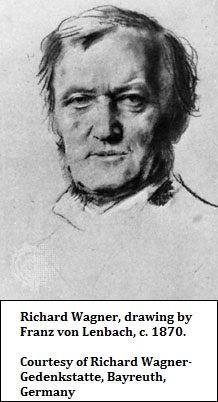
The 19th century saw the emergence of composer-critics (Carl Maria von Weber, Robert Schumann, Hector Berlioz, Franz Liszt), versatile artists with literary proclivities who were not, to be sure, propounding comprehensive theories or systems of thought. Richard Wagner, an active theorizer, presaged a new species, the composer-author. But he did little to advance musical theory. He proposed a unity of music and drama (Gesamtkunstwerk)—a reflection of the "programmatic" preoccupations of 19th-century composers—but its multiplicity of musical and extra-musical elements only added to the confusion of musical thought. The distinctly musical character of Wagner's genius, clearly discernible in The Ring, is in no way explained by his discursive credos. Igor Stravinsky, Arnold Schoenberg, and other composer-authors of the 20th century were to be somewhat more successful in elucidating their techniques and aims.
The concept of dynamism
Present-day ideas of music as a symbolism owe much to two German philosophers, Arthur Schopenhauer (1788-1860) and Friedrich Nietzsche (1844-1900), who brought to the theory of music a new concept, articulated by each in different ways and in divergent terms but faithful to the same principle-dynamism. Both saw in music an art that is not "spatialized" (hence not "objective") in the way that other arts are by the very conditions of their manifestation. Music is closer to the inner dynamism of process; there are fewer technical (and no concrete) impediments to immediate apprehension, for an entire dimension of the empirical world has been bypassed.
 |
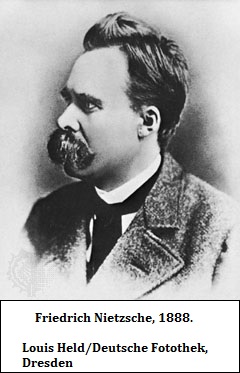 |
Schopenhauer looked upon Platonic Ideas as objectifying will, but music is by no means like the other arts, the copy of the Ideas, but the copy of the will itself. This is why the effect of music is so much more powerful and penetrating than that of the other arts, for they speak only of shadows, but it speaks of the thing itself.
In contrast to Kant he accords a special efficacy to music:
The effect of music is stronger, quicker, more necessary and infallible. Men have practiced music in all ages without being able to account for this; content to understand it directly, they renounce all claim to an abstract conception of this direct understanding itself.
Schopenhauer acknowledged a connection between human feeling and music, which "restores to us all the emotions of our inmost nature, but entirely without reality and far removed from their pain." Music, which he is presenting as an analogue of the emotional life, is a copy or symbol of the will.
Nietzsche posed an Apollonian-Dionysian dichotomy, the former representing form and rationality and the latter drunkenness and ecstasy. For Nietzsche, music was the Dionysian art par excellence. In The Birth of Tragedy from the Spirit of Music, Nietzsche anticipated the 20th-century discovery that symbol making (whether in dreams, myth, or art) is a necessary and to some extent even automatic human activity. The rich suggestiveness and prescience of his insights embraced the concept of the "symbolical analogue"—the artistic function of ordering and heightening the ingredients of the actual world—and the polarities of experience symbolized in the Apollonian-Dionysian conflict itself, which Stravinsky also explored. Nietzsche gave short shrift to mathematical aspects of music, and like Schopenhauer he deprecated blatantly programmatic music that abounds in obvious imitations of natural sounds. Discerning a power in music to create myths, he looked upon mere "tone painting" as the antithesis of its essential character.
Efforts of theorists to account for the universal appeal of music and to explain its effects have, since the 19th century, been various, contradictory, and highly controversial. In pointing out the chief points of view that have emerged, it must be emphasized that there are no completely isolated categories, and there is usually considerable overlapping; a single spokesman, the 19th-century English psychologist Edmund Gurney, for example, may incorporate formalist, symbolist, expressionist, and psychological elements, in varying proportions, to explain the phenomenon of music. Although some disagreements are more apparent than real because of the inherent problems of terminology and definition, diametrically opposing views are also held and tenaciously defended.
Referentialists and nonreferentialists
Among those who seek and propound theories of musical meaning, the most persistent disagreement is between the referentialists (or "heteronomists"), who hold that music can and does refer to meanings outside itself, and the non-referentialists (who are sometimes called formalists or absolutists), who maintain that the art is autonomous and "means itself." The Austrian critic Eduard Hanslick, in his The Beautiful in Music (German edition published 1854), was a strong proponent of music as an art of intrinsic principles and ideas; yet even Hanslick, ardent formalist though he was, struggled with the problem of emotion in music. Hanslick's views have been classified as a modified heteronomous theory.
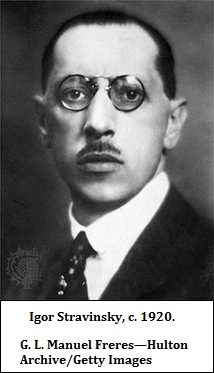
One looks in vain for an extremist of either persuasion, referentialist or nonreferentialist. Igor Stravinsky first achieved fame as a composer of ballet music, and his works throughout his career were rich in extra-musical associations. It would be a comfortable simplification to ally referentialism with "program" music and non-referentialism with "absolute" music. But the problem cannot be resolved by such a choice, if only, first of all, because extra-musical referents can vary in complexity from a mere descriptive title to the convolutions of the Wagnerian leitmotiv, in which a particular musical phrase is consistently associated with a particular person, place, or thing. The referentialist does not require an explicit program (which may, when present, be altogether too meagre by his canons), and the non-referentialist does not necessarily denigrate program music, though he makes a point of distinguishing between the extra-musical program and the musical meaning. The contemporary U.S. theorist Leonard Meyer, in his Emotion and Meaning in Music (1956), speaks of "designative" and "embodied" meanings; he recognizes both kinds in music but appears to give equal weight to the extrinsic and intrinsic.
If there is intrinsic, or embodied, meaning, one may well ask what meaning is embodied and how it is to be apprehended. An extreme formalist would say that the acoustic pattern itself and nothing more is the sense of music; Hanslick, indeed, said this, though he did not hold consistently to the view. But most non-referentialists regard music as, in one way or another, emotionally meaningful or expressive. Referentialists, too, find expressive content in music, though this emotional content may be extra-musical (even if not explicit) in origin, according to the American theorists John Hospers in Meaning and Truth in the Arts (1946) and Donald Ferguson in Music as Metaphor (1960). Meyer has made the observation that while most referentialists are expressionists, not all expressionists are referentialists. He makes the useful distinction between absolute expressionists and referential expressionists and identifies his own position as "formalist-absolute expressionist." In acknowledging that music can and does express referential (designative) meanings as well as non-referential ones, Meyer exhibits an eclectic and certainly permissive view. But he has been criticized for failing to make clear the modus operandi of this referential meaning in music.
Intuition and intellect
Most theorists agree that music is an auditory phenomenon and that hearing is the beginning of understanding. Beyond this there is little agreement. There is bad blood especially between proponents of intuition, like Benedetto Croce, and champions of intellectual cognition, like Hospers. Gurney was constrained to postulate a special musical faculty that need not reside exclusively either in the mind or the heart. The main problem for theorists arises from the inveterate tendency to dichotomize thought and feeling. Henri Bergson (1859-1941) broke with this tradition when he spoke for "an intellectual act of intuition." Recently, a reawakened philosophic and artistic concern for the concept of organic unity has revealed strong affinities among such disparate works as Gurney's The Power of Sound (1880); the U.S. philosopher Susanne K. Langer's Philosophy in a New Key (1942) and her later works; John Dewey's classic Art as Experience (1934); and the U.S. composer Roger Sessions' The Musical Experience (1950).
It is apparent that music is connected in some way with human emotional life, but the "how" continues to be elusive. Sessions (echoing Aristotle) states the problem fairly:
No one denies that music arouses emotions, nor do most people deny that the values of music are both qualitatively and quantitatively connected with the emotions it arouses. Yet it is not easy to say just what this connection is.
It was long fashionable to speak of the "language" of music, or of music as the "language of the emotions," but since a precise semantics is wanting in music, the analogy breaks down. Two or more listeners may derive very different "meanings" from the same piece of music, and since written and spoken language cannot render these musical "meanings," whatever they may be, in consistent and commonly recognizable terms, verbal explication often seems to raise more questions than it settles. Philosophic analysts who hold that all meaning is capable of rendition in language therefore pronounce music—unless it can be saved by the referentialists—without meaning, confronting the thoughtful listener, thereby, with a proposition that seems clearly to contradict (and trivialize) his own experience. The difficulty, of course, is a semantic one and explains why some theorists substitute such terms as import, significance, pattern, or gestalt for meaning. Recognizing an incompatibility between the modalities of nonverbal arts and their treatment by discursive thought, it is hardly surprising that musical aestheticians have been few.
Symbolist contributions
Significant contributions to musical theory were made in the 20th century by several investigators who may be classified as symbolists, though most of them exhibit formalist, expressionist, and psychological elements as well. The most influential (and controversial) work has been done by Langer. Her most adamant critics (such as John Hospers) have objected to her use of the term symbol that must, in their lexica, stand for something definite; she takes pains to ascribe this more limited usage to the term signal. The more general use of the term symbol that she endorses has a long history, notably in such 19th-century figures as Goethe, Thomas Carlyle, and the French Symbolist poets. Langer is accused of having somewhat weakened her argument through a vacillating terminology, and she has described the musical symbol as "unconsummated" because of its ambiguity. But the validity of her theory does not depend upon the term symbol; her thought, indeed, has much in common with that of Edmund Gurney, who does not employ the term and whose ideal motion, if substituted for symbol, would remove most of her critics' objections. Her use of symbol is nevertheless defensible; she construes art as a "symbolic analogue of emotive life," rendering the "forms of sentient being" into intelligible configurations. She is a naturalist; she sees art as organic in origin, and she echoes the view, long held among symbolists, that artistic form and content compose an indissoluble unity that each art manifests according to its peculiar conditions. The symbolism of music is therefore tonal (or, at its broadest, auditory) in character and can be realized only in time; in psychological experience, time assumes an ideal guise. (Painting and sculpture, in their distinctive modalities, embody ideal space.) Langer embraces all the arts in her purview. The U.S. musical theorist Gordon Epperson's The Musical Symbol (1967) is an application of her concepts, with modifications, intensively to music.
Contextualist theories
In moving from symbolic to contextualist explanations of music, it is well to note that a source of great confusion, in the former, is the fact that tone painting (with explicit signals that yield, when the code is understood, designative meanings) is widely regarded as musical symbolism. An example of such tone painting is Bach's introduction of musical notes, corresponding to the letters of his own name, as a theme in the unfinished final fugue of the Art of the Fugue. And surely it may be argued that this qualifies on one level. But the contention that there is an intrinsic symbolism in the musical meaning itself is a claim that referentialists are generally unwilling to honour. Yet many theorists, whose concern is with the sociological or psychological effects of music, are not so much opposed to the idea of inner or profound meaning as indifferent to such meaning per se. Even an absolutist, however, is unable to examine music in isolation from its human environment. Meyer deliberately eschews logical and philosophical problems of music and makes "no attempt to decide whether music is a language or whether musical stimuli are signs or symbols." (He does not defend the inference that such concerns are irrelevant to meaning.) Musical meaning and communication, he maintains, cannot exist in the absence of the cultural context. The statement is hardly open to dispute; a theorist is classified according to his proximity to the referential or non-referential pole. If a referentialist emphasizes explicit aims and associations of a particular work (as in varieties of Gebrauchsmusik, or "utility" music, written for specific social or educational purposes), the formalist can maintain that there is also an intrinsic, or embodied, meaning to which he attaches the greater aesthetic value.
Among contextualists, however, a simple referential view is the exception rather than the rule. Any theorist who examines musical perception is making a study of a complex human activity. He is dealing with the psychology of music, in which certain elements—e.g., music, listener, mode of apprehension, cultural context—are indispensable and in which characteristic processes recur. Specialists will emphasize one element or another: formalists the music itself, sociologists the listener and his milieu, psychologists the how of perception. Though psychology could survey the whole field, in practice psychologists, according to their persuasions, investigate the perception of measurable acoustic phenomena, the physical-mental effects of musical sound, or—more rarely—the functional role of music in human experience; and pragmatists and analysts alike may leave something out of account. But it remains for the comprehensive theorist, probably one who, like Langer, is equipped to discern relationships among many departments of thought, to construct a valid hierarchical structure of musical meaning in all its ramifications.
Deryck Cooke, the British musicologist and the author of The Language of Music (1959), who may be classified as a referential expressionist, has offered a sophisticated argument for the notion of music as language. Concepts, however, may not be rendered by this language, only feelings. Cooke reaffirms the possibility, long disputed by many theorists, that such feelings may be recognized, identified, and even classified. But he confines his investigation to the last few hundred years of the Western tradition.
Information theory
The French theorist Abraham Moles's Information Theory and Esthetic Perception (1966) brings the new science of information theory to bear on musical perception, emphasizing that the concept of form is the essential thing; the "sonic message," whose dimensions vary from one composition to another, is a whole. Information theory thus proves to be a novel ally for organicists. The message, which is subjected to "atomistic" study of its components, is (thanks to recording) concrete; there is a temporal sonic material, a materia musica. Moles gives reinforcement to the aesthetic theory of distance:
The esthetic procedure of isolating sonic objects is analogous to the sculptor's or decorator's isolating a marble work against a black velvet draping: This procedure directs attention to it, alone and not as one element among many in a complex framework.
Information theory, which Leonard Meyer also discusses, begins its investigations without the help of traditional theory, which it finds to be untenable for its procedures. Musical messages discerned through information theory are not referential, yet Moles chooses to term the measurable elements in the sonic repertoire symbols: "each definable temporal stage represents a ‘symbol' analogous to a phoneme in language." According to Moles, music must, as an art, obey rules; the role of aesthetics is to enumerate universally valid rules, not to perpetuate the arbitrary or merely traditional. He foresees experimentation with a much richer repertoire of sounds, transcending musical instruments and drawing on whatever sources—certainly electronic ones—are available for realizing the "most general orchestra." A host of composers have set out to fulfill this desideratum. In order to increase the compass of possible sounds, various electronic synthesizers were constructed. In electronically synthesized music, the medium itself is indistinguishable from its message.
The quest for some distillation of musical meaning may be fore-doomed to failure. Meanings, intrinsic and extrinsic, abound; meanings of all kinds, moreover, are revealed in and through the social setting. Church, theatre, and broadcasting affect music in characteristic ways. The modern concert is a device whereby formal, autonomous meanings are emphasized; further, the scope and available repertoire of the concert have been enormously increased through recordings, for any suitably equipped room may become, at the turn of a switch, a recital hall.
Considerations related to performance practice
Listening to music for its own sake, apart from ritual or storytelling, is a recent historical development. There have always been impromptu song and dance; and performances of music in home, church, and theatrical productions have a long history. But there was no public opera house until 1637 when the first one opened in Venice; the first public concerts for which admission was charged appeared in London in 1672. During the next 50 years there were beginnings in Germany and France also, but the modern concert was not a significant feature of musical life until the late 18th century.
Of the forms that have characterized distinct periods of musical history, it is sufficient to remark here that the chief Renaissance forms—mass, motet, the polyphonic chanson, and madrigal—were allied to texts that strongly influenced their structure. Instrumental music was for the most part in the service of the voice, though instrumental church compositions, dances, and chansons arranged for organ were not uncommon. A strong alliance between voices and instruments has continued into the present, with musical theatre, the art song, and religious music. Instrumental music as a separate genre emerged in the 16th century, gaining considerable momentum in the 17th through a variety of idiomatic pieces. Increased attention to technical fluency was accompanied by greater complexity and sophistication in the instruments themselves. In response to stylistic demands for greater resonance and power, the modern forms of the violin appeared in the late 16th century, only gradually supplanting the earlier viols. The harpsichord did not finally yield to the pianoforte until the 18th century. The once-prevalent idea that early stringed and keyboard instruments were primitive precursors of their modern counterparts has been effectually demolished by research in medieval and Renaissance music and by dedicated performers, who seek to restore the sounds and spirit of those eras.
The development of opera, oratorio, and the cantata gave a prominence to vocal music throughout the Baroque era (c. 1600-1750) that made it equal in importance to instrumental music, with which these forms were closely allied. But instrumental chamber and independent orchestral ensembles, as they exist today, also had their beginnings during this period. A highly significant development of the late 18th century was the definitive appearance of the modern sonata (whether in the form of the solo and duo sonata, piano trio, string quartet, concerto, or symphony) with the Viennese classicists Haydn and Mozart and, later, Beethoven.
Since a vocal text is likely to be confused with intrinsic musical meaning, or at least to divert attention from a preoccupation with it, it is not surprising that modern aesthetic theory followed on the emergence of an autonomous instrumental music requiring greater concentration on the sound itself, its colour and intensity, and the intelligibility (in terms of tonal organization alone) of a composition. Moreover, the very concept of listening as an attentive (and sometimes rigorous), serious, and necessary activity of the music lover gained acceptance only slowly, following the inauguration of public concerts, and is still vigorously resisted. The expectation that the art should provide enjoyment without effort is, indeed, widespread and accounts for much of the opposition to new and demanding idioms. But even for the well-disciplined and eager listener there is the problem of quantity: he must cope as best he can with what Langer has called "the madhouse of too much art." If more effort is required, more discrimination is also needed. In music education, articulate voices ask that teaching be centred more upon qualitative aspects of the art ("aesthetic education"), less upon music making as an activity. This concern for musical value appears to reflect a more intensive search for meaning, which is not likely to be the exclusive property of a particular style or era; nor is it to be sought in an indiscriminate acceptance or rejection of novelty per se. A pronounced pedagogical interest developed in such contemporary popular music as rock, soul, and similar idioms with great numbers of followers, especially among the young, whose gigantic festivals generated feelings of religious exaltation. The texts of the songs are highly emotional and often deal with protest themes; accompaniments are provided by guitars, keyboard and percussion instruments, and are electronically amplified. Music educators became attracted by the intrinsic structural values of this music, especially its distinctive rhythmic and modal characteristics, its texts, and the qualitative levels that may be distinguished. A music so vital and widespread, moreover, was deemed by many to be worth studying in school. The rock music movement became a musical-sociological phenomenon of large proportions.
Music and worldview
Again, music proves its protean susceptibilities in the service of disparate worldviews. Among humanist psychologists (such as the Americans Gordon Allport and Abraham Maslow) music may be one among other means toward self-fulfillment, integration, self-actualization; for aesthetic Existentialists (such as the philosopher Jean-Paul Sartre) it is yet another crucial department of choice and freedom; for spiritual Existentialists (such as the philosophers Karl Jaspers and Martin Buber) it transmits transcendent overtones. For expressionists (such as the composers Schoenberg, Ernst Krenek, and René Leibowitz) music carries austere, and sometimes doctrinaire, moral imperatives. Theodor Adorno, a composer-philosopher and pupil of Alban Berg, wrote powerfully of these and spoke for an awareness of dazzling lucidity, but the tone, notwithstanding his humour, was one of obligation. Only the expressionists, among those mentioned here, were committed primarily to music, though Adorno, in particular, considered music and musicians always in interaction with their environments. The aesthetic concept of play is virtually absent, except among such humanists as Maslow. With Sartre, no less a humanist, the tone was one of responsibility. Many educators long held the explicit aim (at least in part because of a misinterpretation of John Dewey) of presenting the content of a discipline as "fun"; the concern for aesthetic education, an area of great interest to Dewey himself, eschewed this trivial view. But play, in the aesthetic sense, follows rules, as information theory has demonstrated; even "controlled aleatory" composition observes some limits. And the play may be very serious indeed, as in the important 20th-century atonal style known as 12-tone technique, practiced by the Viennese expressionists and their successors.
Tonality and meaning
The most troublesome problem not only for the untutored listener but also for the professional musician has been, in much contemporary work, the loss of explicit tonality; and this accounts for the tardy popular response to Schoenberg and his school: the vocabulary is esoteric. Nineteenth-century compositions did, indeed, stretch the tonal system to its outer limits; but it is now clear that Wagner and Richard Strauss, and even the early Schoenberg, had not broken from it. As for Claude Debussy, his use of "exoticisms" was filigree upon a secure tonal base. So were such practices as the juxtaposition of keys by Stravinsky. This is not to say that the tonality of the Western world, fecund though it has been, is superior or more natural than other systems. Ethno-musicology and comparative musicology have proved this to be a parochial view, though there are still those who champion harmonic practices based on the physical laws governing overtones—as Western tonality is—as the only "natural" source of development. It should not be irrelevant, however, to inquire if any folk music has been discovered that exhibits atonal characteristics.
Tonality in Western music, though a significant aspect, cannot be considered the crux of musical meaning. The tone rows that are used in the 12-tone compositions of Schoenberg, like major and minor tonality in earlier music, are a technical substratum and must be no more explicit in the finished work than the chemical makeup of pigments in the Mona Lisa. The devices selected may affect the comprehensibility or accessibility of the work, but they are not, per se, the determinants of its worth or quality. Similarly with musical colour, or timbre; the 19th century produced a great profusion of compositions, particularly in the orchestral repertoire (e.g., works by Liszt and Berlioz) that exploited the unique sonorities of instruments; control of volume was, in itself, a rich source of colour. Works with literary or other extra-musical associations were excellent vehicles for sonorous effects, but colour, like tonality, must be evaluated in musical context. Langer, among present-day aestheticians, regards words themselves as musical, rather than discursive, ingredients; they are "assimilated" by the song.
Gordon Epperson, Ed.: Professor of Music, University of Arizona, Tucson. Author of The Musical Symbol: A Study of the Philosophic Theory of Music.
Additional Reading
Modern theories of musical meaning
- Arthur Schopenhauer, Die Welt als Wille und Vorstellung (1883; Eng. trans., The World as Will and Idea, 1961);
- Friedrich Nietzsche, "The Birth of Tragedy from the Spirit of Music," trans. by Clifton P. Fadiman in The Philosophy of Nietzsche (1954), are two important expositions.
- Eduard Hanslick, Vom musikalisch Schönen (1854; Eng. trans., The Beautiful in Music, 1957), remains the best single exposition of the formalist (or non-referentialist) position in musical aesthetics.
- Edmund Gurney, The Power of Sound (1880, reprinted 1966), maintains a similar point of view but with considerably greater amplitude and subtlety.
For background of the contemporary symbolist views of musical meaning, see:
- Alfred North Whitehead, Symbolism (1959);
- Susanne K. Langer, On Significance in Music," in Philosophy in a New Key, 2nd ed. (1951), and Feeling and Form (1953).
- Leonard B. Meyer has made an important contribution to the aesthetics of music. His interest in the relevance of information theory to music has
been evidenced in two articles: "Meaning in Music and Information Theory," Journal of Aesthetics and Art Criticism, 14:412-424 (1957), and "Some
Remarks on Value and Greatness in Music," ibid., 17:486-500 (1959), reprinted in his Music, The Arts, and Ideas: Patterns and Predictions in
Twentieth-Century Culture (1967).
- John Dewey, Art as Experience (1934, reprinted 1959); and Karl Jaspers, Von der Wahrheit (1947; Eng. trans., Truth and Symbol, 1959), have given
reinforcement to organic and symbolic theses, respectively.
- Peter Le Huray and James Day (eds.), Music and Aesthetics in the Eighteenth and Early-Nineteenth Centuries (1981), expounds theories of musical
aesthetics from the pre- and early-Romantic period.
- Peter Kivy, The Corded Shell (1981), is a study of the emotional expressivity of music.
Performance practice, styles, and musical forms
The best historical accounts of musical forms, styles, and performance practice are to be found in:
- Donald J. Grout, A History of Western Music (1960);
- Gustave Reese, Music in the Middle Ages (1940), and Music in the Renaissance, rev. ed. (1959);
- Manfred F. Bukofzer, Music in the Baroque Era (1947);
- Alfred Einstein, Music in the Romantic Era (1947);
- William W. Austin, Music in the 20th Century, from Debussy to Stravinsky (1966).
- Sir Donald Francis Tovey, The Forms of Music (1956), contains informative and engaging short pieces.
Robert Schumann, On Music and Musicians, ed. by Konrad Wolff (Eng. trans. 1947), is an example of the work by a 19th-century precursor of the phenomenon of the present-day composer-authors who have contributed to aesthetic theory by elucidating their own works and commentating on other composers and on the scene in general. See also Igor Stravinsky, Poetics of Music in the Form of Six Lessons (1947); Paul Hindemith, A Composer's World (1952); Aaron Copland, Music and Imagination (1952).
- Discussion of music and film may be found in Lewis Jacobs (ed.), The Emergence of Film Art (1969).
- Twelve-tone technique and varieties of serialism deriving from it are treated in Arnold Schoenberg, Style and Idea (1950); and René Leibowitz, Schoenberg, et son école (1947; Eng. trans., Schoenberg and His School, 1949).
Short pieces on electronic music appear often in periodical literature. Harold C. Schonberg, Facing the Music (1981), is a collection of performance-oriented articles. See also Carol MacClintock (ed.), Readings in the History of Music in Performance (1979).
Source: "Music." Encyclopædia Britannica Ultimate Reference Suite, 2013.Date of Origination: Wednesday, 13-April-2017... 05:23 AM
Date of initial posting: Tuesday, 25-April-2017... 11:28 AM Updated posting: Friday, 6-April-2018... 1:14 PM